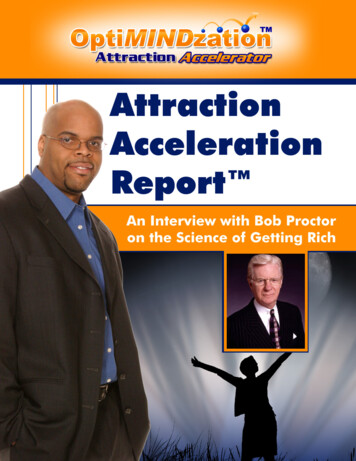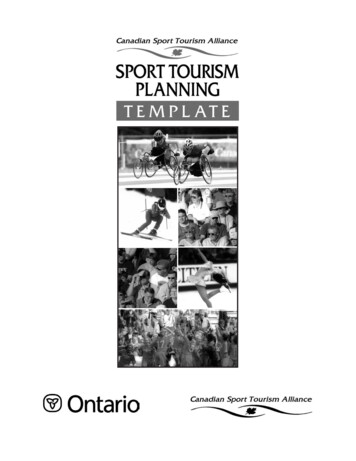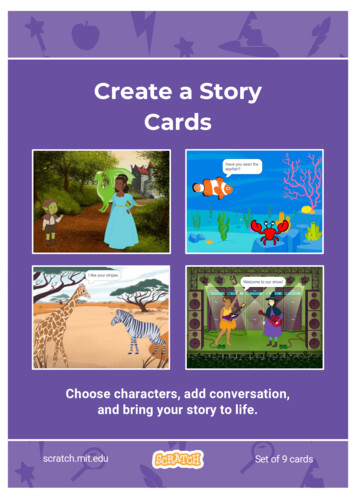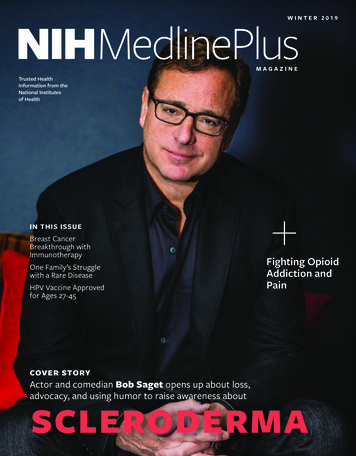
Transcription
WINTER 2019Trusted HealthInformation from theNational Institutesof HealthIN THIS ISSUEBreast CancerBreakthrough withImmunotherapyOne Family’s Strugglewith a Rare DiseaseHPV Vaccine Approvedfor Ages 27-45Fighting OpioidAddiction andPainCOVER STORYActor and comedian Bob Saget opens up about loss,advocacy, and using humor to raise awareness aboutSCLERODERMA
newwebsitecoming soon!National Library of Medicineat the National Institutes of Health8600 Rockville Pike, Bethesda, MD 20894www.nlm.nih.govwww.medlineplus.govDIRECTOR, NLMPatricia Flatley Brennan, RN, PhDDEPUTY DIRECTOR, NLMJerry SheehanDIRECTOR, OFFICE OF COMMUNICATIONSAND PUBLIC LIAISON (OCPL), NLMKathleen CravediMEDLINEPLUS AND MEDLINEPLUSEN ESPAÑOL TEAMS, NLMFedora BravermanWRITER-EDITOR, NLMKathryn McKayOUTREACH CONSULTANT, NLMElliot Siegel, PhDMEDICAL ILLUSTRATOR, NLMJeff Day, MDFriends of the NLM OfficersCHAIRMANGlen P. CampbellPRESIDENTBarbara Redman, PhD, RNSECRETARYNew Year, New Opportunities forNIH MedlinePlus Magazine and You!WE’RE WORKING HARD TO BRING YOU MOREof the NIH MedlinePlus magazine content you love,in fresh and exciting new ways.We’re adding additional features and a fresh design to our NIHMedlinePlus magazine website, magazine.medlineplus.gov.You will soon be able to search the magazine site by MedlinePlushealth topics and access additional articles on topics you careabout. That includes more personal stories from patients andeveryday people living with conditions, and articles from celebritiesand advocates sharing their own health experiences.You will also be able to easily navigate to MedlinePlus on everypage of the site for deeper dives on health topics, diseases andconditions, research updates, and treatment information.The site will feature easy-to-navigate menus, scrolling socialmedia share buttons, and a mobile-friendly design that worksseamlessly on your phone, tablet, or desktop.We are also working to make the website fully bilingual. Soon, youwill be able to read articles in both English and Spanish.Our goal is to provide more readers with access to trusted healthinformation from NIH, the National Library of Medicine, andMedlinePlus.Stay tuned for more updates as we roll out these new andimproved website features. We look forward to continuing thisjourney with you! TNaomi C. Broering, MLS, MATREASURERDennis Cryer, MDNIH MedlinePlus magazine is published byFriends of the NLM in conjunction with24 Superior Drive, Suite 103Natick, MA 01760 (508) 907-7000PRESIDENT AND CEORobert GeorgeCHIEF OPERATING OFFICERMichele TezduyarDIRECTOR OF OPERATIONSJennifer AzarMANAGING EDITOREmily PoeSENIOR EDITORSelby BatemanSTRATEGIC ADVISORPeter ReineckeDESIGN & TECH LEADMary Ellen SlaterSENIOR DESIGNERKibbe EdwardsPROJECT MANAGERAlison LutesSTRATEGIC PLANNING AND LOGISTICSDave SearsArticles in this publication are written by professionaljournalists. All scientific and medical information isreviewed for accuracy by representatives of the NationalInstitutes of Health. However, personal decisions regardinghealth, finance, exercise, and other matters should bemade only after consultation with the reader’s physicianor professional advisor. Opinions expressed herein are notnecessarily those of the National Library of Medicine.
WHO WE AREThe National Institutes ofHealth (NIH) is the nation’spremier medical researchagency, with 27 differentinstitutes and centers. TheNational Library of Medicine(NLM) at NIH is the world’slargest medical library.insideNLM provides free, trustedhealth information toyou at medlineplus.govand in this magazine. Visit usat magazine.medlineplus.gov.12Thanks for reading!GET INVOLVEDDonations andSponsorshipsIf you are interested inproviding a sponsorship orother charitable donationto support and extend thereach of this publication,please contactFriends of the NLM(202) 679-99304720 Montgomery LaneSuite 500Bethesda, MD 20814IMAG ES: COVER, COURTSEY OF B OB SAGET; TOP, COU RTESY OF NETFL IXCONNECT WITH USFollow us on /medlineplusenespanolFollow us on Twitter@medlineplusWINTER 2019Volume 13Number 4Comedian Bob Saget (pictured above with “Fuller House” co-stars Dave Coulierand John Stamos) shares his personal experience with scleroderma advocacy.F E AT U R E SD E PA RT M E N T S08 One Family’s Struggle04 To Your Healthwith a Rare DiseaseSupporting research tounderstand urea cycledisorder and otherrare diseases12 What’s New on theHorizon for Scleroderma?Comedian Bob Saget opensup about loss and advocacy18 Fighting the Opioid CrisisNIH-led initiative engagesmultiple institutes24 Using Your OwnImmune System toFight CancerExperimental immunotherapyresearch is deliveringpromising resultsNews, notes, & tipsfrom NIH28 From the LabLatest researchupdates from NIH30 On the WebFind it all in one place!31 Contact UsNIH is here to helpHelping your childthrough winterear infections4
toyourhealthNEWS,NOTES,& TIPSFROM NIHHelp Your Child Through Winter Ear InfectionsHEALTH TIPS The onset of winter often means the worstpart of cold and flu season, and with that, the dreaded earinfection.An ear infection is a bacterial or viral infection that affectsthe middle ear. The infection is often painful because it createspressure in the small space between the eardrum and the backof the throat (the eustachian tube).Unfortunately, ear infections affect young children morethan others. Eustachian tubes are smaller and more level ininfants and young children, making it more difficult for fluidto drain out of the ear. When tubes become blocked withmucus, it creates pressure on the eardrum.Because a child’s immune system is not as developed asan adult’s, it may be harder to fight a sore throat, cold, orrespiratory infection that can trap fluid behind the eardrum.Older children and adults can also get ear infections, butthey are less common because their eustachian tubes arelarger and slanted, so they drain fluid better.What to look for in your childIf your child is not old enough to communicate pain, hereare a few signs to look for:ɠ Tugging or pulling at the ear(s)ɠ Irritability and crying more than usualɠ Trouble sleepingɠ Fever (especially in infants and young children)ɠ Fluid draining from the earɠ Loss of balanceɠ Difficulty hearing or responding to quiet soundsYour child’s health care provider can check for an earinfection by using an otoscope. The lighted tool showsredness in the ear, fluid, or less likely, a rupture inthe eardrum.4Winter 2019 NIH MedlinePlusThey will typically ask if your child has had a runny nose,cough, or fever, since the virus or bacteria that cause thecold can spread to the middle ear.What to doSome ear infections clear up on their own. However, if anantibiotic is prescribed, it is important that your child takesthe medicine for the full time that your doctor advises.Typical treatment lasts seven to 10 days.If your child has repeated ear infections, your health careprovider may suggest draining the ear with small ventilationtubes. The tubes improve air flow and prevent fluid backupin the middle ear so that the child can hear better.Reducing the riskHere are ideas to help your child get through winter withoutan ear infection:ɠ Stay up to date with all vaccinations, including the flu shot.ɠ Frequently wash hands.ɠ Avoid cigarette smoke, as studies show that babies who
are around smokers have more earinfections.ɠ Limit your child’s exposure to sickplaymates.ɠ Avoid baby bottles in the crib, asfluid can accidentally back up in themiddle ear.What’s next?Researchers sponsored by theNational Institute on Deafness andOther Communication Disorders areexploring vaccines against some of themost common bacteria and virusesthat cause middle ear infections.They are also learning more aboutcolonies of antibiotic-resistantbacteria, called biofilms, that are in themiddle ears of most children who havemultiple ear infections. Restricting thenutrients that grow the biofilms mayfight the bacteria. TSOURCES: MedlinePlus; NIH News in Health;National Institute on Deafness and OtherCommunication DisordersDID YOU KNOW?5 6outofIMAG ES: AD OBE STOCKFive out of six childrenwill have at least one earinfection by their thirdbirthday.HPV VaccineApproved for Ages27 to 45BY THE NUMBERS January is Cervical Health Awarenessmonth, and there is good news on the protectionfront for one cause of cervical cancer: the humanpapillomavirus, or HPV.Last fall the Food and Drug Administration approvedthe Gardasil 9 vaccine for men and women ages 27 to45. Gardasil is also known as the HPV 9-valent vaccine,recombinant. It protects against nine types of HPV.Both men and women can get HPV and pass it onwithout knowing it. Additionally, there is low-risk HPVand high-risk HPV. Low-risk HPV can cause genital warts.High-risk HPV can cause cancers of the cervix, vagina,penis, anus, and back of the throat.HPV vaccination can prevent more than 90 percent ofcervical cancers from ever developing by preventing theinfections that cause those cancers.There are more than 200 typesof HPV viruses. More than 40 ofthem can easily spread throughdirect sexual contact.One in eight people inthe U.S. (13%, or30 million) aged 12 yearsEveryoryearolderabouthas hearing14 millionAmericansloss inboth ears,becomeinfectedmillionbasedon standardwithhearingHPV. examinations.14It can take between 10–30years from the time of aninitial HPV infection until atumor forms.33.7k HPV causes morethan 33,700 cases ofcancer every year inthe U.S.SOURCES: MedlinePlus; Centers for Disease Control andPrevention; Food and Drug AdministrationWinter 2019NEWmagazine.medlineplus.gov 5
NIHCollaborates onNational LimbLoss RegistryProject with Department of Defenseaims to improve quality of careNIH RESEARCH Limb loss is an important medical issue,especially for U.S. military service members. Now thefirst national database on limb loss is planning to open in2020—with help from NIH.The Limb Loss and Preservation Registry willhelp the medical and military communities betterunderstand amputee challenges and needs. Ultimatelyit aims to improve the care of those who haveexperienced limb loss.NIH is partnering with the Department of Defense (DoD)on the project, which will be led by the Mayo Clinic, anacademic medical center.“The Limb Loss and Preservation Registry addresses asignificant public health knowledge gap,” says AlisonCernich, Ph.D. She is director of the National Center forMedical Rehabilitation Research within NIH’s EuniceKennedy Shriver National Institute of Child Health andHuman Development (NICHD).NICHD is leading the limb loss registry effort within NIH.Understanding limb lossLimb loss can happen for many reasons. Those include birthdefects, surgical procedures, or traumatic injury, such as inmilitary combat.Researchers studying diseases and conditions thatcan contribute to limb loss, such as vascular disease anddiabetes, will have access to the registry, says Dr. Cernich.Researchers will be able to sort the data by age, gender, andtype of limb loss.6Winter 2019 NIH MedlinePlusThe registry will help improve treatment andrehabilitation for people who have lost limbs.Information from the database will help:ɠ Prevent limb lossɠ Improve amputation surgeriesɠ Refine rehabilitation approachɠ Improve devices for people with limb lossPartnering to understandlimb lossNIH is partnering with the DoD on developing the registryin an effort to improve the quality of care for active militarymembers and veterans, along with other limb loss patients.“The joint effort between federal agencies allows us tocollect data that will inform research and improve the livesof all citizens coping with limb loss,” Dr. Cernich says. TTo find out more about limb loss, visit MedlinePlus.SOURCE: NIH News Releases
New MedlinePlus Topic: Acute Flaccid MyelitisNEW ON MEDLINEPLUS.GOV Acute flaccid myelitishas made headlines recently, but what exactly is thisstrange disease that affects children?Using MedlinePlus’ new health topic page, we breakdown what you need to know about this rare butserious illness that affects the nervous system.It’s a neurologic disease that affects the spinal cord.Neurologic diseases involve the brain, spinal cord, andnerves, which make up the nervous system.ɠ Symptoms include sudden arm or leg weaknessand loss of muscle tone and reflexes.ɠ It often happens after a mild viral respiratoryillness, like a cold, or a fever.ɠ Anyone can get it, but recent cases havebeen in children.The condition is not new. However, there have beenmore cases reported since 2014.Enterovirus and West Nile virus can all cause acuteflaccid myelitis.If you suspect you or a loved one has acute flaccidmyelitis, see your health care provider immediately.They may perform neurological exams and othertests if it is suspected. TSOURCES: MedlinePlus; Centers for Disease Controland PreventionThe polio-like disease can cause symptoms suchas sudden arm or leg weakness.Did You Know?IMAG ES: AD OBE STOCKNobel Prize Winners at NIHOut of just 12 Nobel Prize winners in 2018, three wereNIH-supported researchers.And they’re not the first.ɠ NIH grantees have won Nobel Prizes datingback to 1939.ɠ 156 NIH-supported researchers have beensole or shared recipients of 92 Nobel Prizes.ɠ Want to see a Nobel Prize in person? There’s one on permanentdisplay at the National Library of Medicine’s History of MedicineDivision. The prize was won by Marshall Nirenberg, who helped usunderstand genetic code.SOURCES: NIH Almanac; NIH News ReleasesWinter 2019NEWmagazine.medlineplus.gov 7
RARE DISEASESZoey’s Story:One Family’s Experience with a Rare DiseaseUndiagnosed urea cycle disorder takes life of college studentIn 2015, college student Zoey Zalusky was 19 years oldwith an exciting future ahead of her. She had a supportive,loving family, and a close circle of friends. She wasstudying to be a nurse and getting good grades at theUniversity of Arizona at Tucson.“She was our social butterfly,” says Renee Zalusky,Zoey’s mom. “She was always everywhere and wantingto do everything. She had a lot of energy.” Zoey was themiddle of three children.But in December of that year, everything changed. Zoeysuddenly passed away from an undiagnosed, rare geneticcondition: ornithine transcarbamylase deficiency (OTC),which is part of a larger group of urea cycle disorders.The disorder can go unnoticed for years, as it did inZoey’s case. If not diagnosed, it can lead to a buildup oftoxic levels of ammonia in the body, which can causebrain damage and other serious complications. Ammoniabuilds up because people with the disorder cannotdispose of excess nitrogen—which comes from theprotein we eat and the protein in our muscles—throughtheir urine.Zoey’s childhoodRenee says looking back therewere some symptoms, but theydidn’t seem out of the ordinary atthe time. In general, Zoey was ahealthy, happy child.“As far as health goes, I alwaysdescribed her as energetic and fullof life,” Renee says. “Wheneverwe’d go to her annual check up,there were never any problems.”Zoey played sports growing upand swam on the varsity swimteam in high school.But Zoey did have an aversionto protein from the time shewas little and always preferredcarbohydrates and salads. Withurea cycle disorder, people oftenavoid protein because it can8Winter 2019 NIH MedlinePlusmake them feel sick. In Zoey’s case, it just seemed likesomething a lot of kids do: picky eating.“Zoey never ate a burger in her life. She never ate asteak,” Renee says. “It’s easy to see now that she had adefinite aversion to protein because it probably made herfeel sick.”As she got closer to adolescence, Zoey started to haveuncontrolled episodes of vomiting. It only happened oncein a while, with no warning, sometimes during high stressperiods, Renee says.“She would just out of the blue suddenly vomit.Sometimes she knew it was going to happen andsometimes she wouldn’t,” Renee says.Her health care providers at the time thought itmight be food allergies or sensitivities. They suggestedeliminating certain food groups and then re-introducingthem slowly, to see if they could determine what wascausing her nausea and vomiting.Overall, they did not seem concerned aboutthe situation and Zoey never really took the dietmodifications seriously.2015Zoey’s disease went unnoticed until thewinter of 2015.It was the first semester of hersophomore year, and Zoey didn’t feelwell. She called her mom (who lives inTexas) saying she fell asleep at 4 p.m.the day before and had slept until 9:00a.m. the next morning. Her words werejumbled and she wasn’t making sense.“She was so upset because she was tryingto tell me she had missed an assignmentthe day before,” Renee says. “At first Ithought she might have been drinking.”Hours later, Zoey wound up in theemergency room at the college’s hospital.Her doctors considered alcohol poisoning,but after doing a variety of tests, includingdrug and alcohol screening, they weren’table to diagnose anything in particular.
RARE DISEASESLooking back, Zoey was having a reaction to the ammoniabuildup in her body due to urea cycle disorder.“They came to the conclusion that she was mildlydehydrated,” Renee says. “The only thing that really raised somered flags were that her liver enzymes were slightly elevated.”The doctors gave her fluids, which seemed to help. Zoeywas told to come back a few days later for a checkup and tofollow up with her family doctor.Zoey had a few repeat blood tests, which showed her liverenzymes were still high. But overall, she seemed back tonormal and tried to catch up on schoolwork, Renee says.But a few weeks later, Zoey collapsed. Her urea cycledisorder caused her to have irreversible brain damage dueto the high levels of ammonia in her body, which led to afatal coma.IMAGES: COURTESY OF REN EE ZALUSKYDiscovering urea cycle disorderAfter Zoey passed away, her parents made the decision todonate her organs. On Christmas Day 2015, three peoplereceived the gift of lifesaving organs. This is how theyeventually discovered what led to Zoey’s coma.The Arizona Donor Network contacted them, lettingthem know that the man who received Zoey’s liver had diedshortly after due to complications from urea cycle disorder.Zoey’s whole family (her parents and two siblings) wereall tested at Baylor College of Medicine in Houston afterhearing this. They discovered that Zoey’s father, John,also has OTC deficiency. The disease had developedspontaneously in utero, or before he was born.Spreading the wordZoey’s family still works closely with doctors at Baylor, whohelp John manage his OTC deficiency. Baylor also helpedconnect them with the National Urea Cycle DisordersFoundation (NUCDF), a patient advocacy group. They’re“Zoey never ate a burger in herlife. She never ate a steak. It’seasy to see now that she hada definite aversion to proteinbecause it probably made herfeel sick.”- Renee Zaluskycommitted to telling Zoey’s story to help others and shareher memory. A special part of this was a video discussingZoey’s life and her OTC story.Renee is also spreading the word about blood ammonia tests,which can help diagnose urea cycle disorders. Zoey’s ammonialevel was not tested during either of her hospital stays.“It’s not an expensive test to do, but it’s not an easy oneeither,” Renee says.For an ammonia test, the blood sample must be runimmediately, because after 30 minutes there is a risk of afalse positive.The NUCDF has created a website that seeks to addressthis lack of awareness among medical professionals aboutthe hidden dangers of ammonia poisoning.“It was so devastating for us that nobody had ever reallyheard of this disorder, and it became really important to tellpeople Zoey’s story,” Renee says. “We’ve been trying to dowhatever we can to support efforts to educate the public, aswell as emergency room personnel. If even one family canbe saved from what happened to us, it will be worth it.” TWinter 2019NEWmagazine.medlineplus.gov 9
RARE DISEASESWhat is it Like toResearch a Rare Disease?U R E A C Y C L E D I S O R D E R P R I N C I PA L I N V E S T I G AT O RSHARES HER EXPERIENCEWhat is a urea cycle disorder?A urea cycle disorder results from aninability to safely dispose of nitrogenin the body. When our bodies breakdown protein, we create nitrogen thatis used for many chemical reactionsin the body for growth, and excessnitrogen is made into a nontoxicchemical called urea that we get rid ofthrough our urine.“Patients actuallyprovide a lot ofvaluable suggestionsto us as researchersbecause they areliving with thedisease.”- Andrea L. Gropman, M.D.But when that process goes wrong,in people with urea cycle disorders,the excess nitrogen is not flushedout through our urine. Instead, thenitrogen builds up as ammoniain our bodies and causes damage,particularly in the brain.How do people get the disorder?Urea cycle disorders are geneticconditions. They can arise frominheriting a mutated gene from the10Winter 2019 NIH MedlinePlusparents or it may start as a newcondition in the patient.How many patients have a ureacycle disorder?We think that it’s about 1 in 30,000. Wedon’t know the exact number of patientsout there because many individualsremain undiagnosed or have very mildsymptoms, especially adults.What kind of research doesthe Urea Cycle Rare DiseasesConsortium work on?The goals of our consortium areto better understand what causesurea cycle disorders, to study thenatural history of these disorders,and develop new treatments. Already,our consortium has improved thecare of adults and children with ureacycle disorders. We are now lookingat related issues, like liver conditionsthat may develop later in life.We’re currently working onexpanding newborn screening to allurea cycle types (there is screeningavailable for some of the types of ureacycle disorders now) so they can beidentified before brain injury has set in.Can you tell us some specifics?My project in particular usesmagnetic resonance imaging (MRI)to look at the long-term effects ofhyperammonemia on the brain.People’s attention and their workingmemory are impacted by urea cycledisorder and there are changes inbrain structure and networks that wecan study using MRI.What’s something we may notknow about urea cycle disorderresearch?Many of our researchers have beenworking for decades on urea cycledisorders. And we also have juniorinvestigators who are training underAndrea L. Gropman, M.D. researches ureacycle disorders with funding from NIH. Sheworks at Children’s National Health Systemin the Washington, D.C. area.more senior researchers to carry onthis research. That’s one of the basicrequirements of the network, thatthere be a substantial commitmentto educating the next generation ofphysicians and researchers in raredisease.What advice do you have forpatients of rare diseases?For a patient or the family of a patient,it’s often helpful to align yourself withadvocacy groups for that disorder.Those groups are partners with us inour research design and study and arevery supportive of families.Patients actually provide a lotof valuable suggestions to us asresearchers because they are livingwith the disease. We always want tohear from patients.And for patients who may thinkthey have symptoms of a raredisease, they should discuss that withtheir physician and possibly bringinformation with them, such as familyhistory, unusual dietary preferences,or unusual blood work results. TIMAG E: COU RTESY OF ANDREA GROPMANAndrea L. Gropman, M.D., studiesrare diseases with support fromNIH and the Rare Diseases ClinicalResearch Network. She talked aboutwhat it’s like to research a raredisease as a principal investigatoron the Urea Cycle Rare DiseasesConsortium. She has been studyingthe disorder for 14 years.
RARE DISEASESSupporting Rare Disease Research at NIHRare Diseases Clinical Research Network brings the spotlight to over 7,000 conditionsTiina K. Urv, Ph.D., leads the Rare DiseasesClinical Research Network, part of NIH’sOffice of Rare Diseases Research. Shediscussed the network, which includes 22groups across the country and conductsresearch on approximately 200 rare diseases,with NIH MedlinePlus magazine.What makes a rare disease rare?We define rare diseases as defined in law, through anamendment to the Orphan Drug Act of 1983. That is acondition that affects fewer than 200,000 Americans.What is the biggest misconception aboutrare diseases?The biggest misconception is that rare diseases are rare.There are over 7,000 rare diseases that impact the lives ofover 30 million people.If you look at it collectively, that’s as many people in theU.S. who have diabetes, and as many as those with HIV,cancer, and Alzheimer’s combined. Rare diseases are ahuge public health problem and we need to start thinkingabout them as a group as opposed to one at a time.Can you tell us about the Rare DiseasesClinical Research Network?The network came about through legislation that passed inNovember of 2002, known as the Rare Diseases Act.Since 2003, the network has funded 31 individualconsortia (smaller research groups within the network),touched on over 238 disorders, and over 40,000 people haveparticipated in one way or another in the network over time.IMAG E: COU RTESY OF NIHWhat areas of research are promisingfor rare diseases?Everyone within the network is doing something a littledifferent. For instance, gene editing is really exciting. Wehave a lot of hope with that.How do you recruit people with rare diseasesfor clinical trials?It is challenging. That’s one of the things that the networkworks on. How to best go out and find patients. They workclosely with the patient advocacy groups.Each of the individual groups consists of a team thatincludes patients, advocacy groups, researchers, andclinicians. The individual groups each focus on at least threeTiina Urv, Ph.D., works to support rare diseaseresearch throughout the country.rare diseases. These consortia work very closely with NIHand its Rare Diseases Clinical Research Network.How do you recommend patients or their loved oneswith rare diseases get involved or join a study?A really good resource we have at NIH is the Genetic andRare Disease Information Center (GARD). It links you toso many wonderful resources. If you’re looking for a familygroup, you can either email them or call them. We canhelp them find the care they need as best we can.If somebody’s looking for a clinical trial, all clinical trialshave to be registered at clinicaltrials.gov. And the RareDiseases Clinical Research Network has a patient registry.What message do you have for patients strugglingwith a rare disease?You’re not alone.There are peoplewho care andFind Out Morethere are peopleout there—ɖ MedlinePlus: Rare ians,rarediseases.htmlpatient advocacyɖ Rare Diseases Clinicalgroups—who areResearch Networkreally workinghttps://www.hard to make ararediseasesnetwork.org/difference andɖ National Urea Cycle Disordersfind answers. It’sFoundationa reallyhttp://www.nucdf.org/amazingcommunity. TWinter 2019NEWmagazine.medlineplus.gov 11
SCLERODERMADon’t GiveUp HopeTelevision actor and comedian Bob Saget has been making Americanslaugh for decades. The “Full House,” “America’s Funniest Home Videos,”and “Fuller House” star has also won praise for his longtime advocacy onbehalf of people battling scleroderma, a chronic autoimmune disease. Herecently spoke with NIH MedlinePlus magazine about his advocacy andcommitment to finding a cure for the disease.12Winter 2019 NIH MedlinePlusIMAGE: COURTESY OF B OB SAGETBob Saget’s Unlikely Pathto Scleroderma Advocacy
SCLERODERMA“Research is the key that opens thedoor for the cure. You cannot eradicatethe disease or diminish the diseasewithout understanding it.”— Bob SagetHow did you first get involved as an advocate forthose with scleroderma?It’s an unusual story. One day I got a call from someoneI did not know asking me to host a comedy fundraiserfor a disease I knew very little about. The call was fromSharon Monskey, a wonderful and amazing woman, aformer ice skater who had scleroderma and founded theScleroderma Research Foundation (SRF).I said yes and hosted the event, which starred EllenDeGeneres, Rosie O’Donnell, and others. Little did I knowthat just a few years later, my sister would be diagnosedwith the disease.I have been on the board of directors of the SRF for overa decade now and hosted their events for 25 years.IMAG ES: L EF T, COURTESY OF NETFLI X; RIG HT, COU RTESY OF BOB SAGETYour sister fought a long battle with scleroderma.Can you share her story with us?My sister, Gay Saget, was a school teacher nearPhiladelphia. She was 44 when she was diagnosed withsystemic scleroderma. She got treatment, but it was justtreating her symptoms with drugs like prednisone andcortisone. She had to move to Los Angeles to live with myparents because she needed so much help. She passedaway just two years later.The good news is that since then we have made someremarkable progress. There are new drugs specifically forscleroderma that are helping people. But we have a longway to go to get to even more effective treatments andeventually a cure.What message do you have for those living withthe condition and their loved ones?I speak with and meet a lot of people with the condition.Bob Saget on the set of “Fuller House,” left, and right with othercomedians and entertainers at an event for scleroderma awareness.My word to them is don’t give up hope because we aremaking incredible progress.I also advise them to get educated about the conditionand to find a real expert in scleroderma to care for them.That is key. And if they can, try to get help from a centerof excellence to get the best treatment.It is incredibly painful to have a loved one experience acondition like this. It is a very painful disease. My familyis still having post-traumatic stress disorder. I don’t knowhow my parents endured. But I would tell loved ones:Don’t give up hope. Stand by them and get them help.And get them help as early
ɠ Loss of balance ɠ Difficulty hearing or responding to quiet sounds Your child’s health care provider can check for an ear infection by using an otoscope. The lighted tool shows redness in the ear, fluid, or less likely,
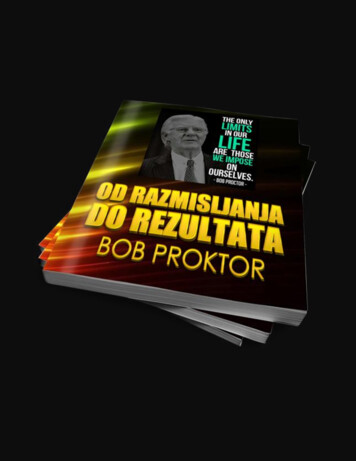
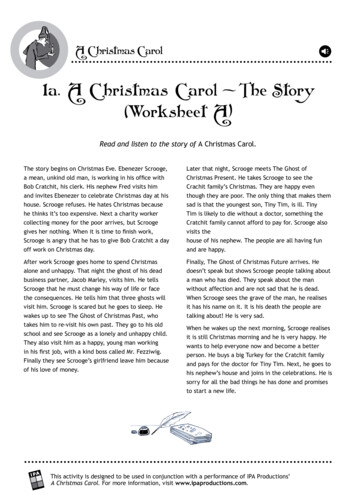
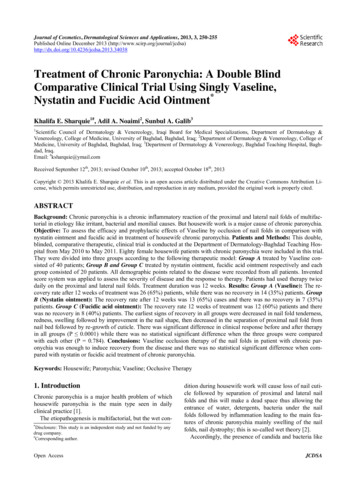
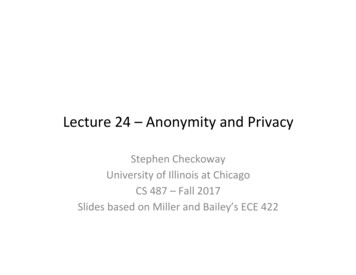
![[EPUB ] The Bob's Burgers Burger Book: Real .](/img/6/the-bob-039-s-burgers-burger-book-real-recipes-for-joke-burgers.jpg)
